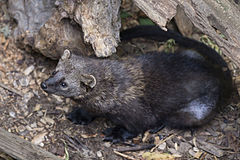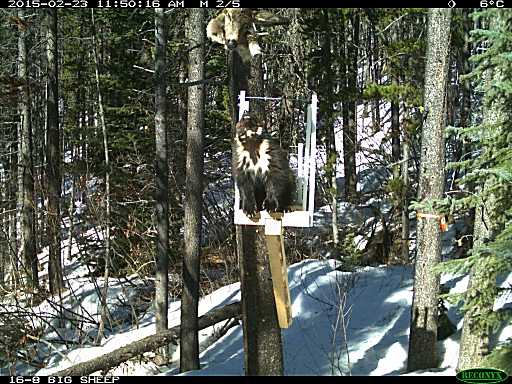"To those who love this land and work for its preservation, that we may realize the future by learning from the past." by David Munch.
The Allan Brooks Center overlooks the city of Vernon. It has great views of the north Okanagan valley and it's a good place to learn more about nature. When we arrived, two events were happening: a Raptor demonstration and a celebration of the First Nations. An elder captured my attention with some of the technical features of building a pit house. In Allan Brook’s day, naturalists first shot their specimen, then skinned it, stuffed it, mounted it, studied the result and finally may have painted it. He was born in India in 1869. His father collected birds for the British Museum. Allan arrived with his family, in Chilliwack in 1894.  He purchased a piece of land at Okanagan Landing in 1904 and was able to count 40 nesting bird species on his property. He sold bird specimens all over the world and his paintings were featured in bird guides. His son and daughter-in-law, Allan and Betty Brooks, are appreciated for leaving us Brooks’ Point, a beautiful property at the southern tip of Pender Island. He purchased a piece of land at Okanagan Landing in 1904 and was able to count 40 nesting bird species on his property. He sold bird specimens all over the world and his paintings were featured in bird guides. His son and daughter-in-law, Allan and Betty Brooks, are appreciated for leaving us Brooks’ Point, a beautiful property at the southern tip of Pender Island.
Continuing our journey north in the spring, we travelled approximate 52 km from Vernon to Falkland where we turned right onto a gravel road. About 14 km along is a very attractive wetland. I had the pleasure of recording Pied-billed Grebe, Red-winged Blackbird, Marsh Wren, Virginia Rail, American Coot, Common Snipe, and Canada Goose at dawn. The Dawn Chorus reminds me of the individual instruments in an orchestra as recognizable parts of the symphonic whole.  Another 16 km along Hwy 97 at Westwald, we crossed the Salmon River and passed the Douglas Lake Road on our left. If you have time, its an interesting drive. It starts in interior Douglas Fir forest, parallels the Salmon River, passes a canyon left over from the last ice age, skirts Salmon Lake, passes through first nation territory, and the administrative center for the Douglas Ranch. We counted 6 Northern Harrier hunting for voles with their owl-sharp ears in those grasslands! I couldn't help thinking about those tiny Salmon that leave Salmon Lake each year, swim down Salmon River to Salmon Arm, across Shushwap Lake, down the Little River to the Little Shushwap Lake and down the South Thompson River.
Another 16 km along Hwy 97 at Westwald, we crossed the Salmon River and passed the Douglas Lake Road on our left. If you have time, its an interesting drive. It starts in interior Douglas Fir forest, parallels the Salmon River, passes a canyon left over from the last ice age, skirts Salmon Lake, passes through first nation territory, and the administrative center for the Douglas Ranch. We counted 6 Northern Harrier hunting for voles with their owl-sharp ears in those grasslands! I couldn't help thinking about those tiny Salmon that leave Salmon Lake each year, swim down Salmon River to Salmon Arm, across Shushwap Lake, down the Little River to the Little Shushwap Lake and down the South Thompson River.
Highway 97 continued north and blends with Highway 1 and 5. We were approaching Tk'emlups, The meeting of the waters, better known as Kamloops. After the city, you will see a pull-off on the right, where you can enjoy a panoramic view of Kamloops Lake. Off to the right or east the muddy North Thompson and the clear South Thompson rivers enter the lake. It has been estimated that the silt from the North Thompson could fill the lake in about 4000 years time. The outlet of the lake, to the west, becomes the Thompson River and joins the Fraser at Lytton. |